
These days, artificial satellites are built with longevity in mind. The latest NASA/NOAA Geostationary Operational Environmental Satellite (GOES-S)—launched earlier this month—is expected to remain in active service for up to 15 years, until well into the 2030s, whilst Spain’s Paz radar-imaging spacecraft, lofted atop an Upgraded Falcon 9 in February, will endure for at least the next seven years. A raft of others, including the United States’ Pioneer 10 and 11 and Voyager 1 and 2 deep-space probes, to say nothing of SpaceX CEO Elon Musk’s Falcon Heavy-boosted “Starman”, could last for millions of years in the cosmos. But none of them has been in space as long as Vanguard 1, a tiny satellite, launched 60 years ago, which is not expected to burn up in Earth’s atmosphere until the end of the 22nd century.
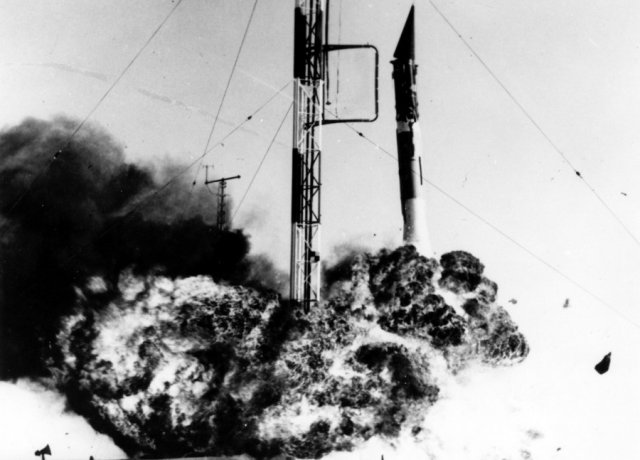
Today, Vanguard 1’s twin claims to fame are its longevity and the fact that it was disparagingly nicknamed “the grapefruit” by then-Soviet Premier Nikita Khrushchev. His judgement was an apt one, for the satellite measured just 6.4 inches (16 cm) in diameter and weighed a mere 3.2 pounds (1.47 kg), a fraction of the size and weight characteristics of the early Sputniks. Unlike the Soviets, America’s journey into space had been fraught with difficulty. In December 1957, its initial attempt to get a Navy-built Vanguard satellite into orbit ended catastrophically, when its booster rose just four feet (1.2 meters) above Launch Complex (LC)-18A at Cape Canaveral, before exploding in a fireball. Eight weeks later, on 31 January 1958, a Juno I rocket—part of the Army’s Redstone heritage—successfully delivered Explorer 1 into orbit as the first artificial U.S. satellite.
In the uncertain times after the close of World War II, efforts by both the United States and the Soviet Union to achieve military supremacy over the other had progressed from nuclear weapons to hydrogen bombs to Intercontinental Ballistic Missiles (ICBMs), the first of which—Sergei Korolev’s R-7—launched in August 1957. By this stage, both superpowers had publicly announced their intent to launch artificial “Earth satellites” for scientific research during the 18-month-long International Geophysical Year (IGY), which extended from July 1957 through December 1958. To much surprise and dismay in the West, it was the Soviets who first reached Earth orbit with Sputnik 1 in October 1957 and they kept up the pace by launching a dog, Laika, aboard Sputnik 2, a month later.
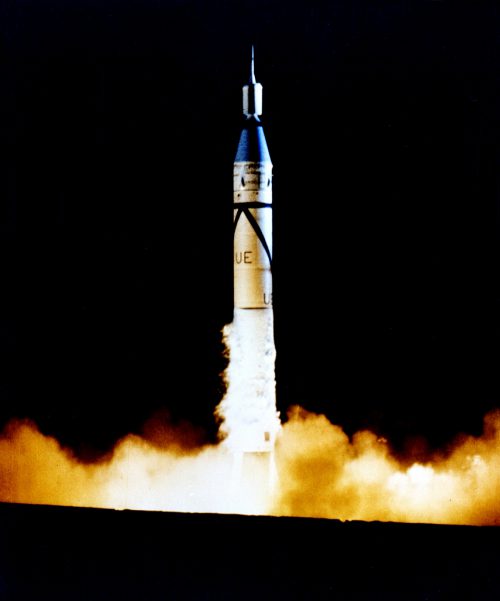
For America, success and failure were close bedfellows in those bygone days. Explorer 2, launched on 5 March 1958, suffered a failure of the final stage of its Juno I and did not achieve orbit. And as the year progressed, further failure was juxtaposed, more or less equally, with success. Explorer 3 and 4, launched in March and July, were successful, but Explorer 5 in August was lost when the first and second stages of its Juno I collided, shortly after separation. The Vanguard program of satellites, launched by a booster of the same name, suffered an even more dismal fate. Following the 6 December 1957 just-off-the-pad explosion, no fewer than five Vanguard satellites were lost in launch failures between February and September 1958. Attitude-control system failures, stage separation failures, insufficient burn-times, fuel-line obstructions were blamed as root causes.
The exception to Project Vanguard’s line of failures took place at 8:15 a.m. EDT on Monday, 17 March 1958, when the three-stage Vanguard rocket roared aloft from Launch Complex (LC)-18A. Now demolished, this site supported 14 Vanguard launches between December 1956 and September 1959, followed by ten flights of the suborbital Blue Scout Junior booster between September 1960 and June 1965.
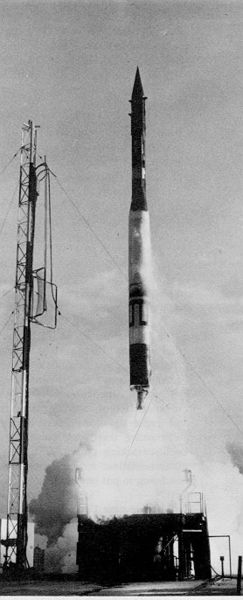
Powered uphill by its single, General Electric-built X-405 engine—fed by liquid oxygen and kerosene, with an initial thrust of 30,000 pounds (13,600 kg)—the 75-foot-tall (23-meter) Vanguard was capable of injecting only 20 pounds (9 kg) of payload into low-Earth orbit. The first stage separated some 2.5 minutes into flight, whereupon the second stage took over. Built by Aerojet, it burned nitric acid and unsymmetrical dimethyl hydrazine, producing some 7,600 pounds (3,450 kg) of thrust in two minutes of burn-time, whilst the solid-fueled third stage completed the boost to orbit with 2,600 pounds (1,180 kg) of propulsive yield. Approximately 8.5 minutes after departing the Cape, America’s second fully successful artificial satellite was in orbit.
And there it would remain. Vanguard 1’s initial orbital parameters measured 2,466 miles (3,969 km) in apogee and 406 miles (654 km) in perigee, inclined 34.25 degrees to the equator, and circling the globe every 134.2 minutes. Coming on the heels of Sputniks 1 and 2, and Explorer 1, it became only the fourth spacecraft to successfully enter orbit. Occupying a Medium Earth Orbit (MEO), it was expected to remain aloft for up to 2,000 years, but solar radiation pressure and atmospheric drag perturbations during periods of high solar activity affected its perigee and it is currently expected that Vanguard 1 will burn up in the atmosphere after about 240 years, sometime in the late 22nd century. With Sputnik 1 and 2 having both decayed from orbit in January and April 1958, respectively, and with Explorer 1 enduring until March 1970, this leaves Vanguard 1 as the undisputed holder of the title for the oldest manmade satellite currently still in space.
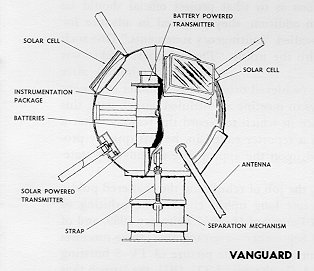
That is not to say, of course, that it remains operational. Vanguard 1 has been a “derelict” spacecraft for more than five decades. It became the first satellite to utilize solar cells—six in total, all mounted onto its body—and its six protruding antennas provided engineering and tracking data, as well as electron content and internal temperatures. A tiny transmitter, powered by the satellite’s mercury battery, provided tracking data which demonstrated that the shape of Earth was slightly pear-shaped or, more precisely, had a slight north-south asymmetry, with its “stem” close to the North Pole. The final radio signals from Vanguard 1 were received in May 1964.
Today, both the satellite and its attached upper stage remain in space, silently circling the globe every 134 minutes. After 60 years, equivalent to 21,900 days or 525,600 hours or 31.5 million minutes or even 1.89 billion seconds, Vanguard 1 is an unchallenged record-holder. It has completed in excess of 235,000 orbits since launch and, assuming its end-of-the-22nd-century demise date holds true, it may accrue not too far off one million orbits—an estimated 940,000—by the time it finally returns to its place of origin. Vanguard 1 may not carry great recognition in the memories of the general public anymore, but it remains a sterling example of humanity’s thirst for knowledge and desire to continuously explore the cosmos.




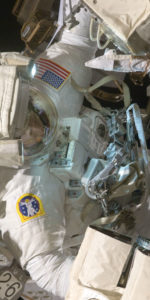

K1:. Great read. Yesterday 17 March 2018 was/is the one year anniversary of uniquely qualified members of the Navy’s elite joint tactical air controllers engagement of an alien made satellite colloquially known as the black knight . As a comparison , it(z) mercury batteries had it looked in place for over 19,000 yeRs
J1:. Dang it. Tiny text. Fat fingers . & no edit button….
Yeah black knight, otherwise known as a stray insulation blanket, but imagined to be an alien space ship by people colloquially known as “nut jobs”.
Hey bub, I’ve got a thorium mine on the moon for you, send cash only.